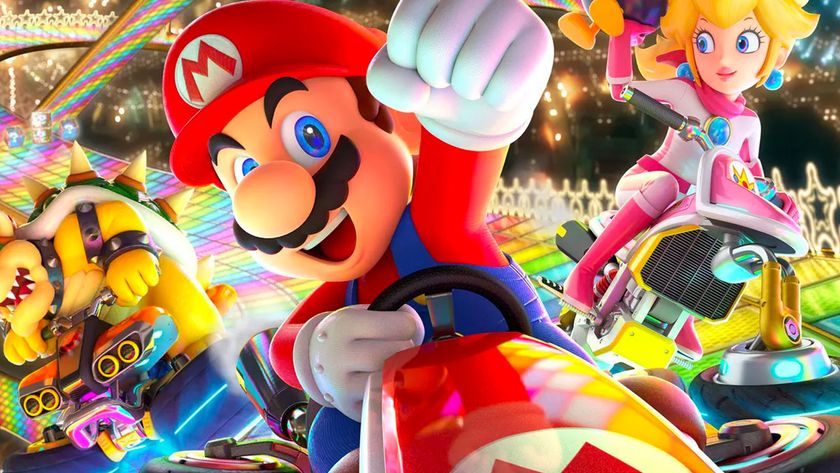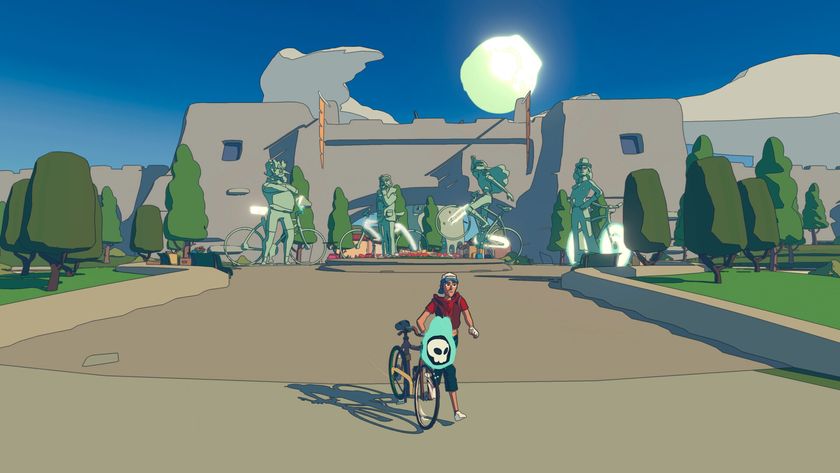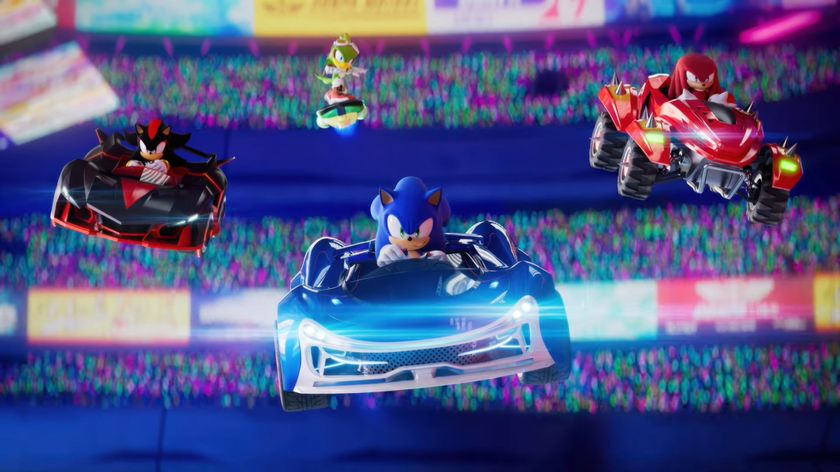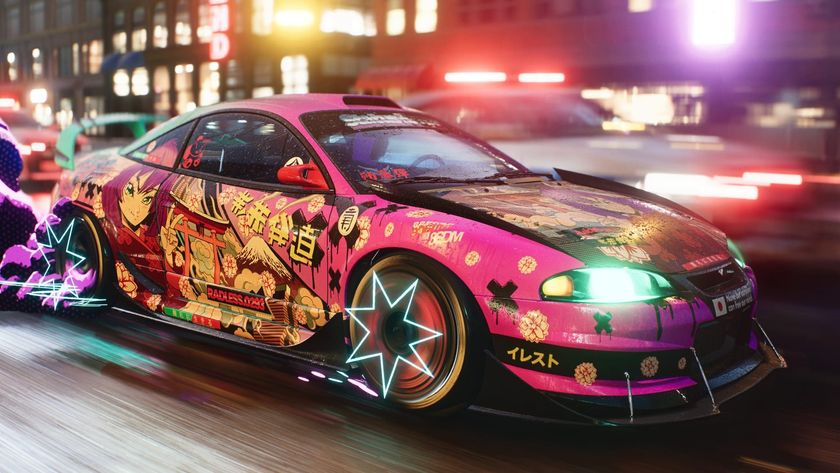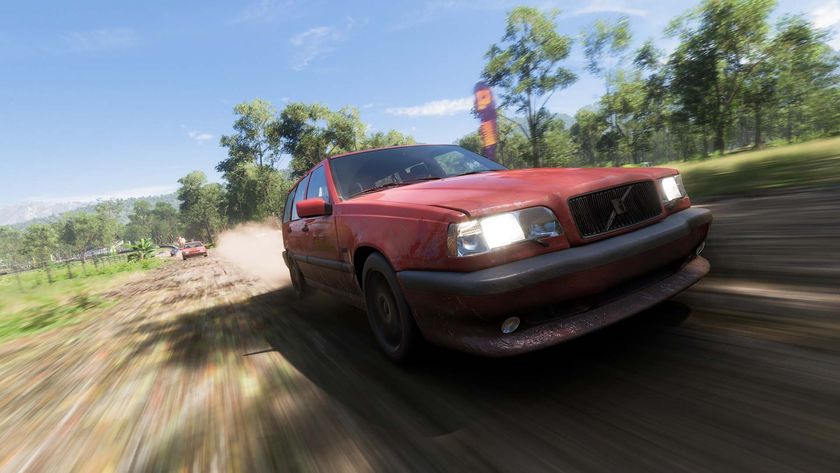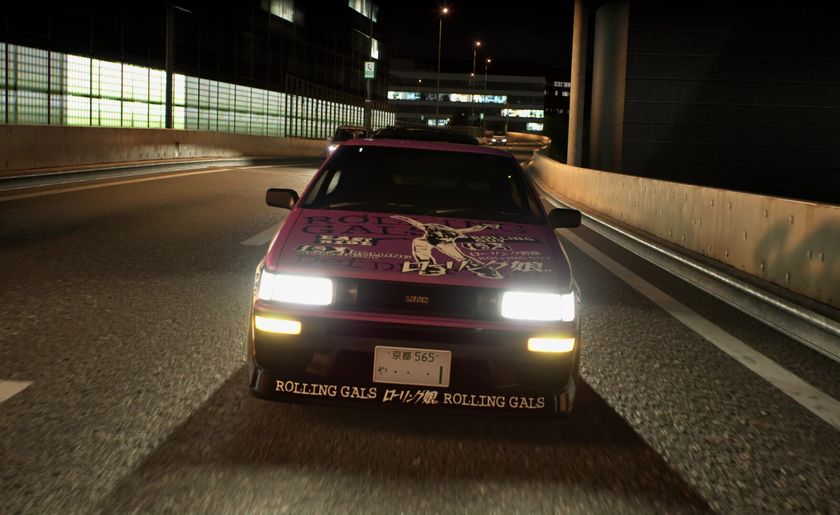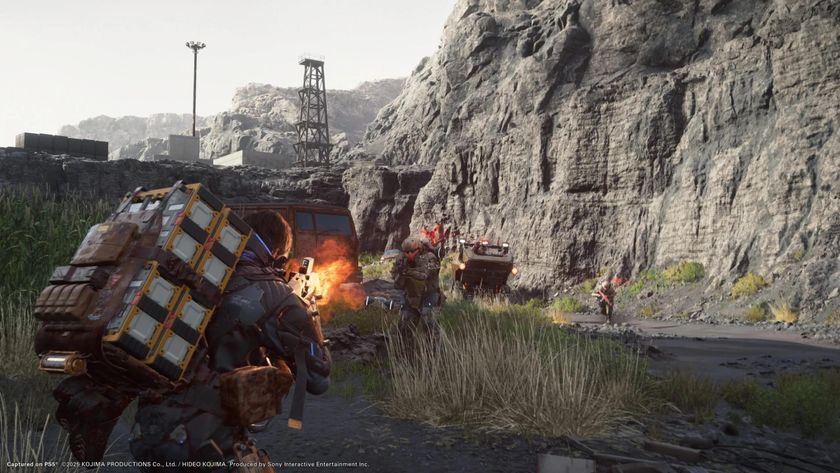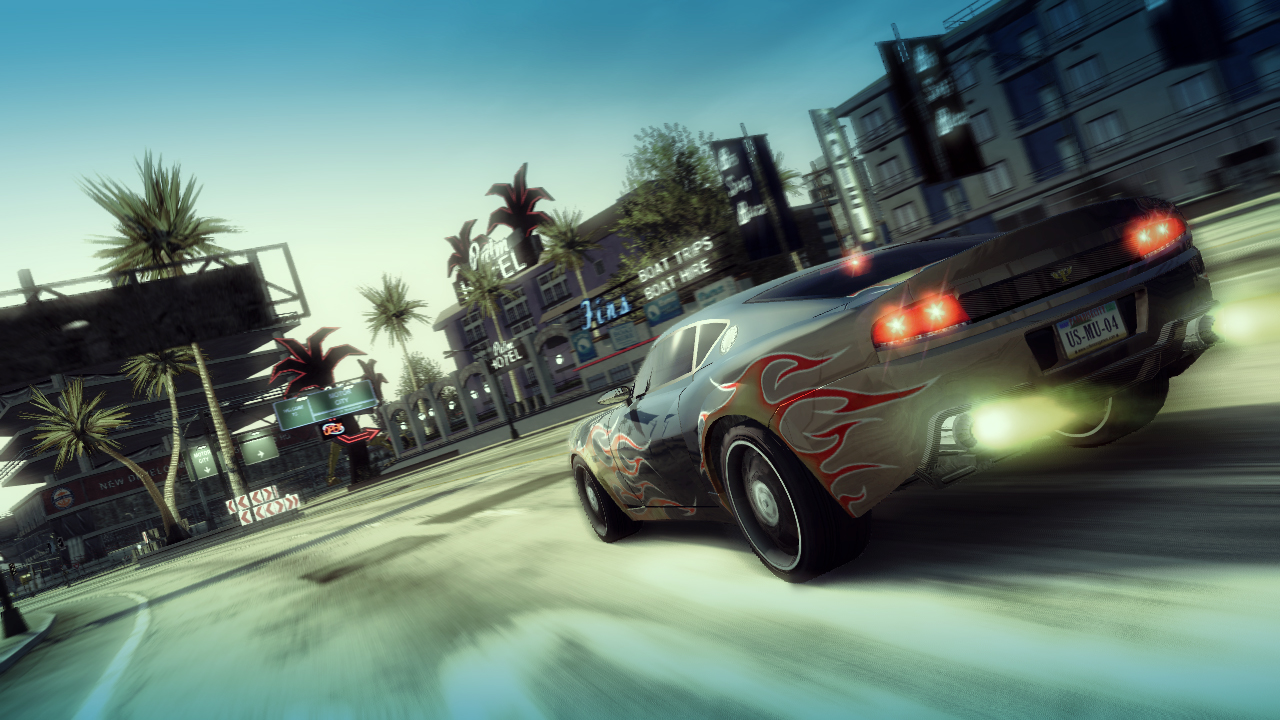
Burnout Paradise Remastered is out now on PS4 and Xbox One, so we're taking a look back at the racing series. This interview was originally conducted by Official Xbox Magazine in May 2016
When life gives Alex Ward lemons, he makes it rain lemon juice. As the co-founder of Criterion Games, he made his living from destruction – whether it be beautiful cars in Burnout, or beautiful backdrops in Black. Now the founder of start-up company Three Fields Entertainment, he’s destroying beautiful homes in Dangerous Golf. OXM caught up with him in his new office in Petersfield, Hampshire (before he trashes the place) to reminisce about the history of his most famous creation...
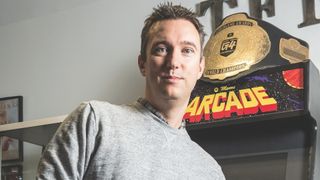
OXM: What’s interesting to me about the Burnout series is that every game is very different to the last. In an industry where identical sequels are commonplace, why did Criterion insist on making such sweeping changes to a winning formula?
Alex Ward: The honest answer there is that in 1996 on New Year’s Day I went to London to see a documentary about John Lennon, called Imagine. It planted a few seeds in my mind, one of which was that Lennon was being interviewed later on in his career, and he was looking back on The Beatles records. We used this line a lot at Criterion but this is honestly where it came from – he said every Beatles record was a reflection of who they were at the time.
There was a core team of about five or six who worked on Burnout throughout, but there were also a lot of people coming in and out as the team’s size fluctuated. So each game was a reflection of who we were at that time. With each of the games we had to push ourselves to be different. And the other main part of the answer is that doing the same thing again as a team is not interesting. I always wanted it to be a series that you’d look back on and people would argue which one was the best one, because they all had their strengths and weaknesses.
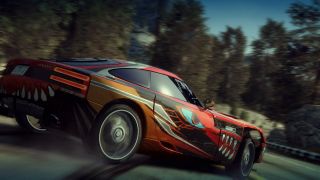
OXM: I always find it interesting when music sites interview bands and they ask them what their favourite record is and it’s always off-kilter with what fans might think...
AW: It’s always some obscure B-side. Bands – the ones they like to play are the ones that they want to sing, like their new stuff. Or they want to sing something that was lesser-known but that they personally enjoy, but maybe wasn’t as commercially successful. Or they want to sing a B-side.
Sign up to the 12DOVE Newsletter
Weekly digests, tales from the communities you love, and more
OXM: So my question is, what personally is your favourite Burnout game?
AW: Well the easy answer there is Burnout 3: Takedown every time. It was genuinely exciting to do. The tech was solid, we were ahead in the development all the time so that meant for all the external stuff we had to do, we always had great software and we knew we could win. We were able just to play down a winning hand every time and people got very excited. It was a pleasure to show it off. I’m not sure everybody at the time was sure of what was going into it, particularly takedowns. I remember when we were talking about how we were going to make takedowns better before we had arrived at stopping the action and seeing the car go behind you, the UI programmer at the time thought there was too much on the hood, like ‘why are we doing this’? But takedowns were kind of in. Burnout 3 was the one I look back and I think I’m most happy with it. I’m happiest with it because there’s nothing there that pains me.
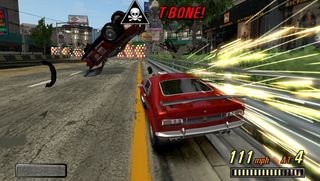
OXM: Burnout 3 was the tipping point where the series got bolder, brasher and more aggressive. Was it reflective of where you were as a studio at the time?
AW: That was a time period where we were really influenced by SSX. In that series you can power the character up and then when you go back to the start with the character fully charged it’s a different game. That was quite mind-blowing. SSX was a bold and vibrant game made by a brilliant creative director called Steven Rechtschaffner, who was a Burnout 2 fan. He came to visit us and gave us the wonderful advice that using boost in Burnout 3 should be like snorting a huge bowl of cocaine. SSX was big and brash, and when you got into the zone, with Run DMC thumping, it was very clear.
OXM: It was around this time that Burnout made the shift from in-house audio to licensed tracks. That, alongside the roadside advertising, left many fans feeling EA were stomping all over your creative vision...
AW: Burnout 3 was our nod to SSX, which is why we use DJ Atomika in the later games. Our in-house audio team recorded music that went louder when you boosted, but when we signed to Electronic Arts all of a sudden they’d send you a catalogue and you could pick real songs yourself. Given the chance, ask any developer in the world, and if you can put real music in your game you probably would. As for billboards, well, we had some billboards we needed to design, which takes a bit of time and we had to think them all up. So when we talked to the EA guys and said ‘well, can we advertise FIFA’, then they go, ‘yeah, sure, we’ll send you the artwork’, sorted. So we advertised FIFA, Battlefield and I think Medal of Honor was in there as well. Well, why wouldn’t we? To us it was a real game, it became a real advert, it was work we didn’t have to do so that’s why we did it. There was nobody in the background going, ‘you’ve got to do this’. We were pretty much left alone while we were making Burnout 3.
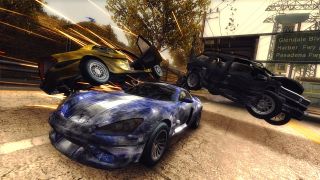
OXM: The flip side of the original question is, which Burnout game do you feel you were less happy with, or maybe would have approached in a different way?
AW: I’d say the art direction in Revenge. Looking back, I’d probably wish to do it differently. I say the art direction in the sense that the game’s very brown and quite a bit dayglow, and I think that Burnout 3 was a bright sunny day. Going forward to Revenge, we were searching for what’s called in the trade an ‘ownable look’, so you could look at the screenshot and know what it is. Mirror’s Edge is a good example of that – if you look at a picture it’s got a very ownable look.
Revenge was a name that we didn’t gel with because we wanted to call it Burnout 4 and that’s where we were pushed to think up a title. It was going to be called Rush Hour Revenge, and then it got shortened to Revenge. So I think about the art direction, when I go back and boot Revenge up, I do like the tracks and I do like how giddy and over the top it is, but I do think it’s a bit brown and a bit yellow.
OXM: That was very much the style of the mid-noughties, though.
AW: The start of the piss filter, I think is what it’s called, but that’s just as lighting tech evolved. You can do more clever things with it. We didn’t really think about it on Burnout 1, 2 or 3 because the game was just going to run at 60 frames so you can’t really do any clever lighting.
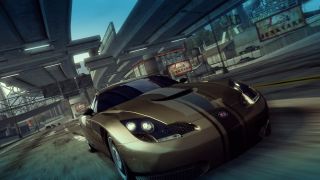
OXM: That brings us on to the open world Burnout Paradise, a game that’s completely ahead of its time and continues to influence the way racing games are structured today.
AW: The big game that influenced me from an open world point of view was Pandemic’s Mercenaries. A brown-looking game, but it did it maybe better than Revenge. Mercenaries was probably more influential to me than Grand Theft Auto ever was. It was a very ambitious project, and not without its problems. A lot of people couldn’t see why we’d change and go to open world – it’s easier to control the racing experience on closed tracks that are all sealed in. The risk is that you can’t make the race as good in an open city because people can get lost. In Pixar terms, we ran up a lot of hills – like trying to teach AI how to drive in an open world environment.
Our mantra was that it had to be a game where you can take your time, where you’re the master of your domain. It had to be fun to drive around the world and explore – that’s why we started on the whole collectable thing. Can you go and find all the billboards? Can you go anywhere you can see a gate? What are the collectables? That was the start, that was new for us in going round. It should just be fun to drive round the world so then it took an incredibly long time to get AI stood up and working so you could make a race.

OXM: Paradise blazed a trail for today’s trend for ‘games as a service’, with its deluge of free updates that completely transformed Paradise City...
AW: Yeah, it was driven by us because we worked in a company that published a lot of hit games. At that time there was a lot of talk in the trade about the threat of used games, in the sense that you’d release a game and then the consumer would play it for a few weeks, complete the game, take it back to the shop, trade it in and get the next game. We figured that you wouldn’t trade a game if you knew there was something else coming down the line. We were the first full-priced game that was a digital game so we pioneered that, and we were always asking questions of our world. Can we have motorbikes in? Can we have a plane in? Can we have a helicopter in? What else can we do?
I thought it was all quite good fun – I know a smart programmer we had who left the company, and he left because he thought he didn’t want to be the person who put a BMX bike into Burnout, whereas I thought that would have been quite marvellous, really. Can I go and pedal round the world? Yeah, I probably would. And that’s something that we see more of now with GTA Online adding in more stuff.
OXM: The studio then moved onto Need for Speed. Surely it must have been a culture shock, taking over someone else’s creation with licensing restrictions?
AW: I think the main licensing restriction is you can’t drive your car on the pavement – I think that’s probably the only main one. I think some of the car manufacturers don’t particularly like to see the crashing but that’s what you’re seeing now with Forza, so what we did was okay.
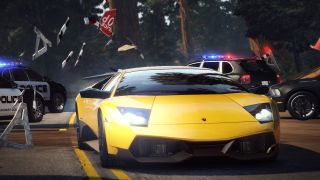
OXM: How did you come to move from Burnout to Need for Speed? There was a sense your need for Speed games were effectively Burnout games in a corporate suit.
AW: We’d just finished Paradise and we were looking what to do next. The Need for Speed guys, who always sold more than us, I think they put a game out [Need for Speed: Undercover] and it got 3/10 in Edge, and I remember thinking that’s not right. So I think I literally called the head of EA publishing on his way to work and said that he should give it to us. He said okay. It’s a higher profile and our job there was to try and bring it back to life, to revitalise it after a game that hadn’t been well-received, critically or commercially.
We did about six months of failed starts on a concept called Need for Speed: Millionaire, which was going to be an online-only game and, of course, even probably now, people weren’t too popular on making a game that was online-only. It was going to be like a Top Gear game, where you won the lottery at the start of the game and you and your friends got access to all the world’s best cars and you can go off and have some adventures.
Trying to build that and communicate that to a team of people [was not easy] – they were a bit confused by that, so after about six months we abandoned it for something more straightforward. I was into Need for Speed on the 3DO, so I figured we’d have a crack at revisiting an old game, Hot Pursuit, with its focus on police chases. There’s a lot of Burnout in there and it would have to be, it was made by the Burnout team. It’s like asking Top Gear to do an episode of Downton Abbey – it’s probably going to have a bit of Top Gear in it in period costume.
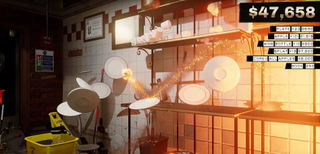
OXM: Would you consider revisiting the racing genre in the future?
AW: We think about it a bit differently now. I mean, what we can do today on today’s tools and hardware would be quite interesting, but Three Fields Entertainment is only starting out – we still have to get Dangerous Golf done. If we can raise enough money to make a spiritual successor to Burnout – and we think that’ll be our third game – I could definitely see us having a crack at an open world game.
This article originally appeared in Xbox: The Official Magazine. For more great Xbox coverage, you can subscribe here.
The official source for everything Xbox One, Xbox 360, and Xbox Series X. We're also a magazine, covering all things Xbox in the UK and the US. Originally established in 2001, the magazine was discontinued in April 2020.
